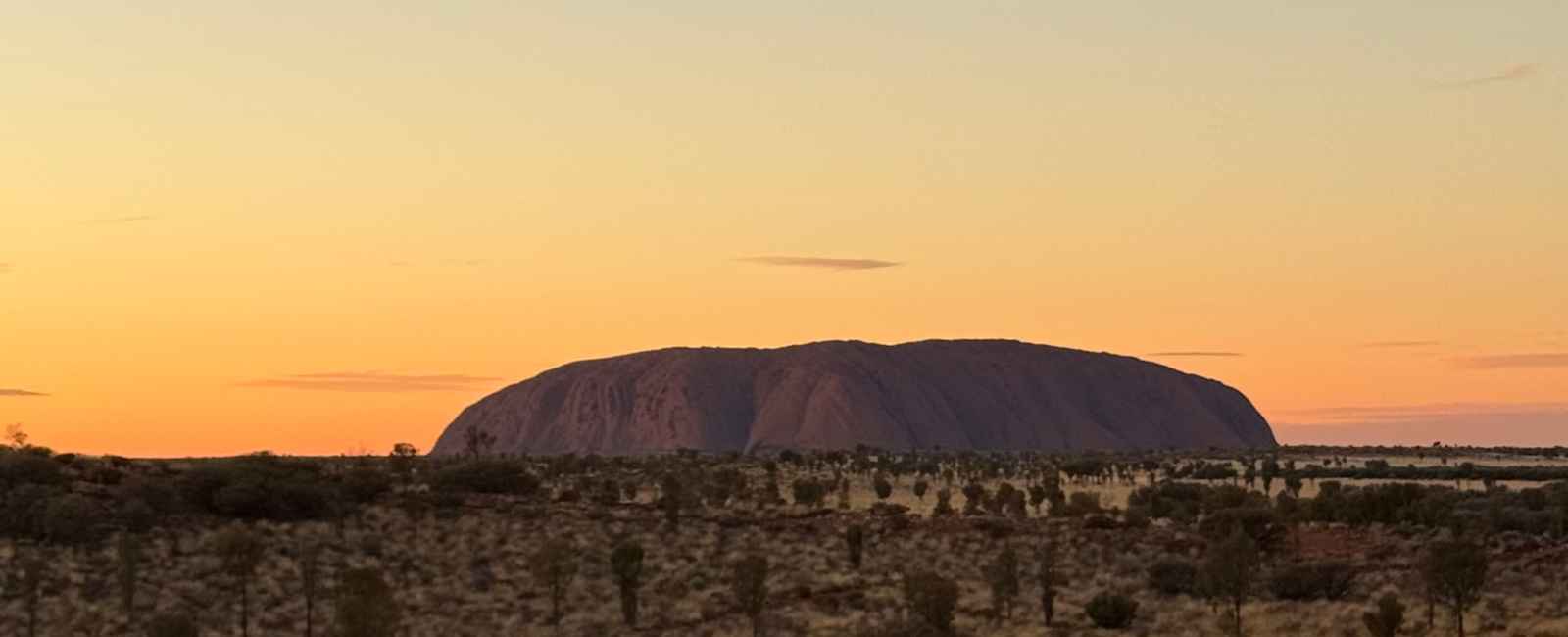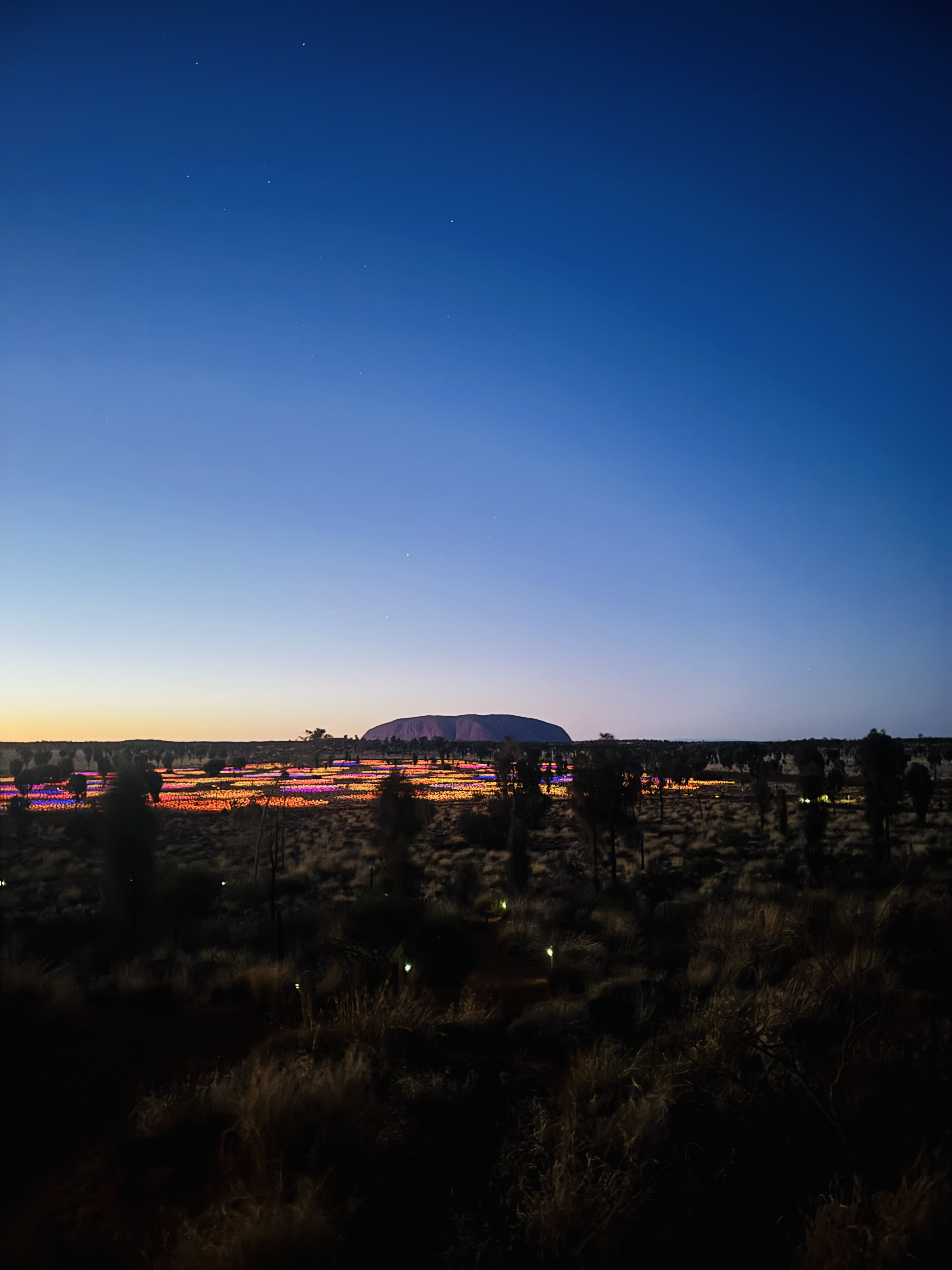
On my flight from Brisbane to Uluru, I couldn’t help but quickly peek out the window and experience my first glimpse of what the Northern Territory landscape had to offer when the pilot announced that we were about to descend into Ayers Rock Airport. The red of the dirt snakes through the scenery, and it suddenly occurs to me just how far away I am from Brisbane. And how far away I am from anything, really.
The blue and green of the sea and the port and the lights of the Brisbane city skyline are replaced by the reds, yellows and greens of the remote Aussie outback. I know I’ve never seen anything like it, nor am I likely to ever see it again. The Red Centre. Middle Earth. Northern Territory. Uluru. Ayers Rock; ‘The Rock’.
Uluru, the original name given to this sacred site by the Anangu people, began its formation more than 550 million years ago, rising out of the sea. Above ground, Uluru is a staggering 348 metres tall. Even more astounding, 2.5 km of Uluru is not visible to the naked eye as it resides underground. So, what you’re seeing is the tip of a red iceberg.
Did you know the red colour is due to a high concentration of iron-bearing minerals in the rock, which over millions of years of exposure to air and water has oxidised (or rusted). The rock underground is naturally grey.
How to get to Uluru from Brisbane
There are direct flights from Brisbane to Uluru all year round (BNE → AYQ) thanks to Virgin Australia.
If you’re staying at the Uluru Ayers Rock Resort or associated campground, a free airport shuttle bus will pick you up from the Ayers Rock Airport. The shuttle stops multiple times throughout the resort, making it very easy to get to your accommodation and is approximately a 10-minute trip.
As soon as I my feet touched the tarmac of Ayers Rock Airport, I looked back to see the tail of the plane, and with the red and cream sand dunes, the purple and yellow of wildflowers (if you happen to visit in spring like me, which is the best time of year to visit since it’s the dry season, so while it’s still hot, it’s a dry heat unlike the humid heat you get in the wet season). The juxtaposition of modern aircraft with the harsh and wild outback was already more than what I could have possibly envisioned. And I’d only just arrived.
Here are (just some) of what I experienced in this sacred place, and what I highly recommend you must-do if you get the opportunity to experience Uluru for yourself.

1. Walk through a sea of colour at the Field of Light at sunrise
Bruce Munroe’s extraordinary 50,000+ solar powered light stem installation is one to behold, at any hour of the night. But if you ask me, getting up at 4am to experience the illuminated Australian desert, is well worth the effort.
The bus will pick you up from the Ayers Rock Resort for the sunrise tour approximately 1.5 hours before sunrise. In the dry season the sun rises at 6:45am and sets around 5:45pm. You begin to live around these times as most of the activities usually take place in the morning, before it gets too hot, and around dusk, before it gets too cold. Yes, it is cold in the outback at night, in fact, much colder than Brisbane in spring.
Make sure you’re ready, as nothing quite prepares you for the beauty of walking around in the field of lights, and then, when the sun rises, realising what was hiding there all along. Uluru, shining red, blue and purple, depending on where the light hits. It was my first time seeing Uluru in the flesh, not realising that she’d been sitting there all along, cast into shadow by the dark of night. Don’t forget to turn around and see Kata Tjuta at sunrise too. The less famous, but no less beautiful site of “many heads” less than 60 km away from Uluru. Fun fact: the tallest point of Kata Tjuta is higher than Uluru, rising to 546 m high.
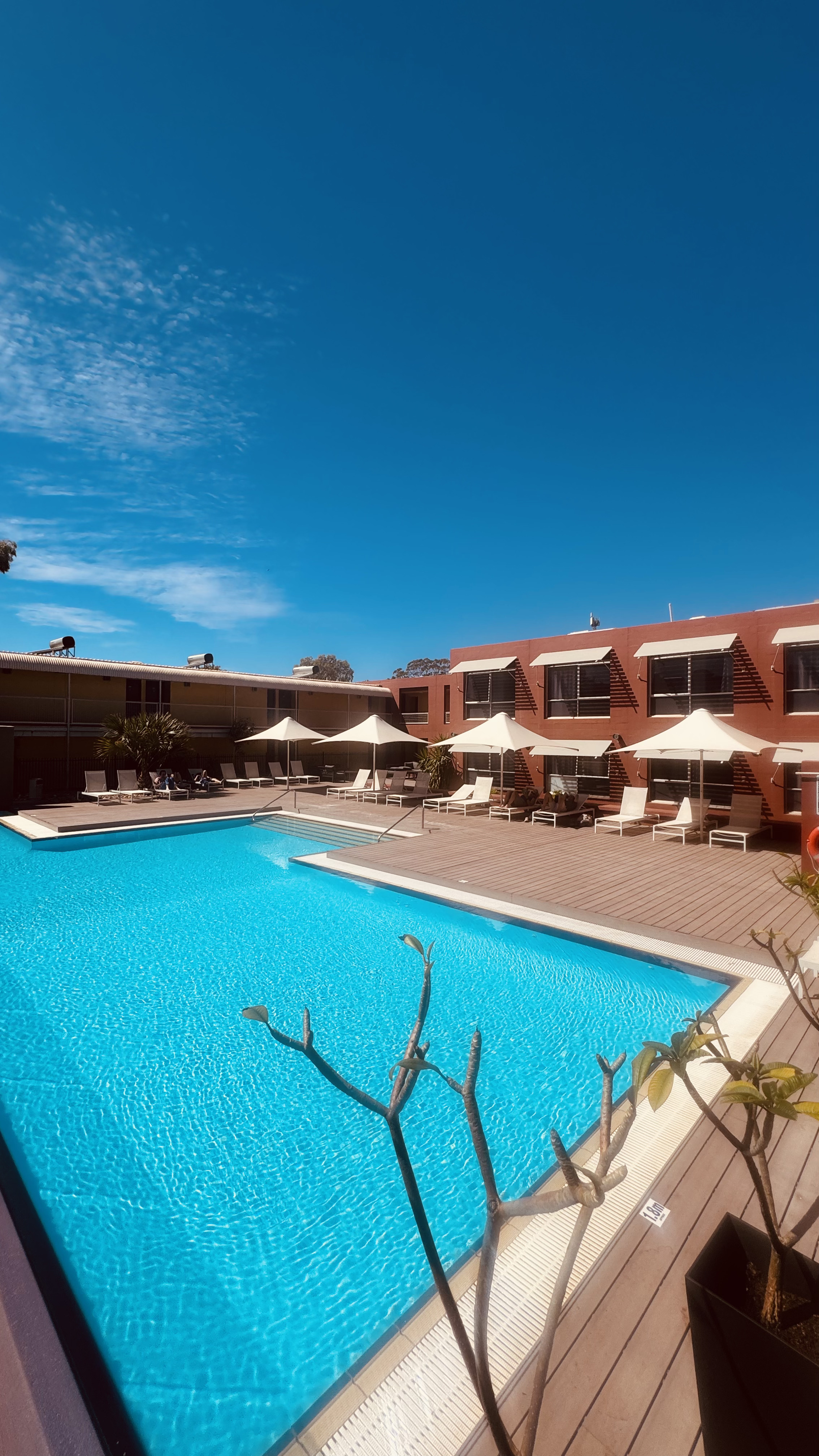
2. Discover the best of Ayers Rock Resort
I didn’t know what to expect from a 5-star resort nestled among one of the most sacred sites in Australia, but I should’ve known it would be nothing short of extraordinary.
The Ayers Rock Resort is an easily walkable mini town with some of the best service, souvenir/gift shops, dining options, pools and cocktails you can imagine and even an IGA (this is helpful for tour snacks and bits and pieces you may have forgotten, like sunscreen!).
There are a lot of free activities you can get involved in and around town, including learning more about bush tucker and how our First Nations people eat off the land. You’ll also have the opportunity to learn about Yarning Circles where you can hear local Indigenous stories, garden walks, gallery tours and explore a camel farm. From my experience, you don’t want to miss out on the camel farm, even if you miss out on getting to ride a camel (like me) you can still see them up close, pet some goats and other animals (including a kangaroo!). The camel merch is some of the best I’ve seen (my niece’s favourite animal is the Dromedary, I got her LOADS of things here). Plus, you can read up on all the history and see how important camels were to Australia in those early pioneering days, including the infamous Bourke and Wills expedition.
Otherwise, is any hour spent by the pool, cocktail in hand, a wasted hour? I think not.
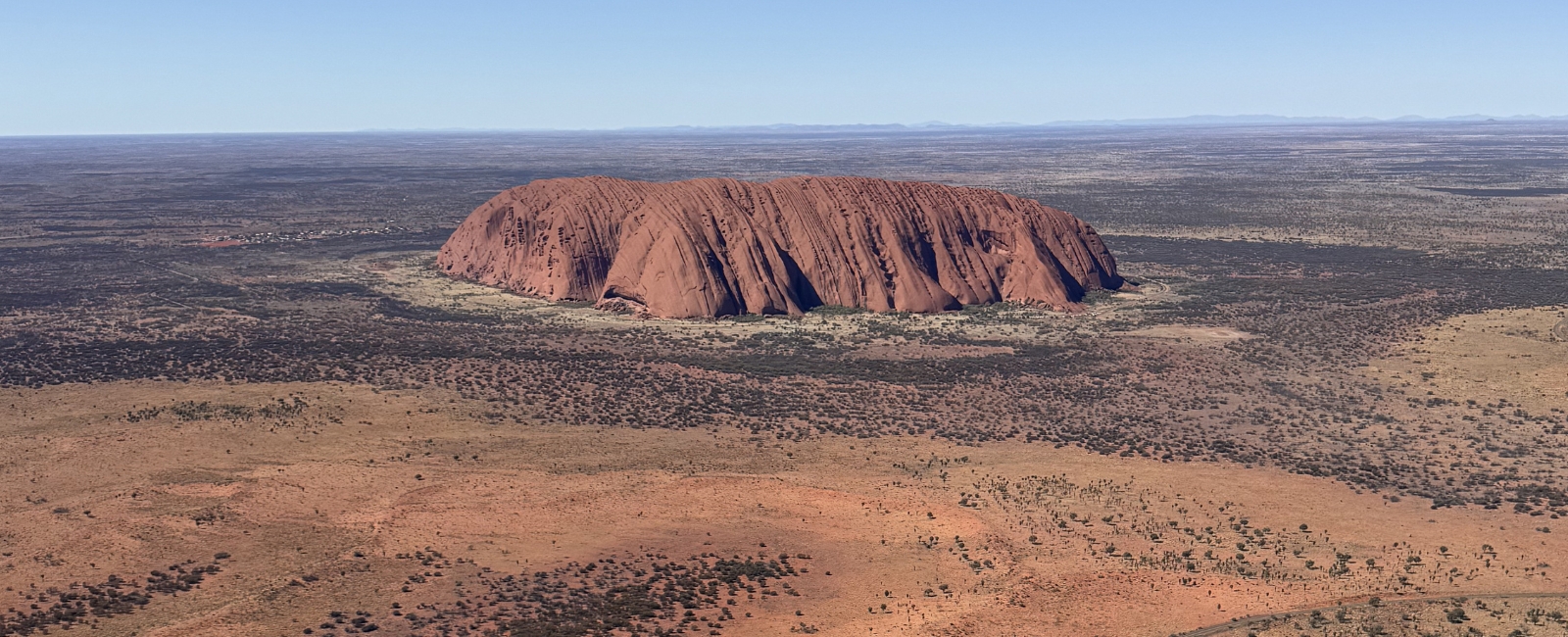
3. Take a helicopter tour over Uluru and Kata Tjuta
Experience panoramic views of Uluru and Kata Tjuta from above in a short helicopter ride. Take to the sky and experience Uluru from above. The pilots are so friendly and happy to be showing you such incredible scenery.
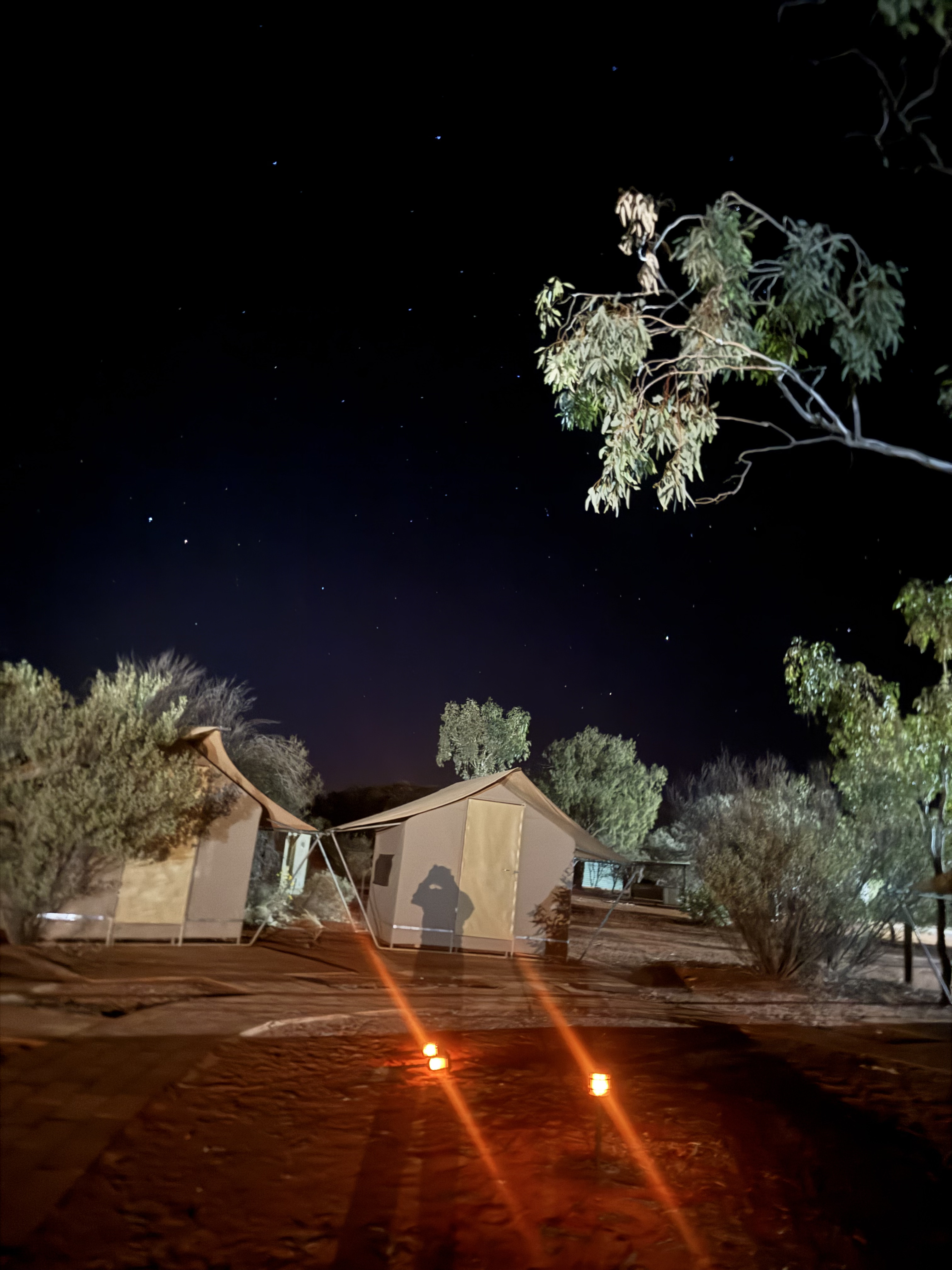
4. Uluru star gazing: camp under the stars in the outback
Set aside two, three or five days for camping trips and sleep right out in the open night sky. The number of stars you can see in these remote places due to low humidity and low light pollution, creates the most spectacular night sky viewing. See Venus and Jupiter and the Milky Way.
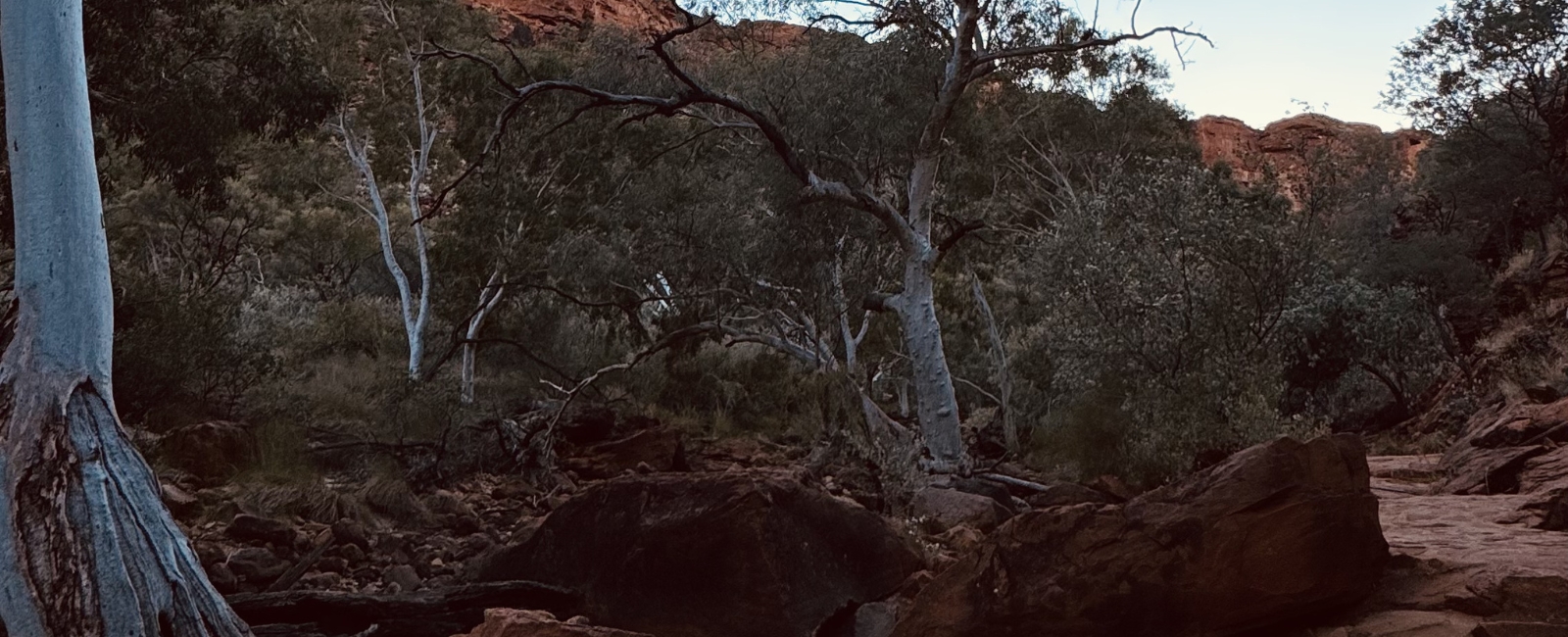
5. Hike through ancient landscapes at Kings Canyon
Featuring 300 m high sandstone walls, palm-filled crevices and views that stretch across the desert. All of which being just a three hour drive from Uluru, this sacred canyon should not be missed!
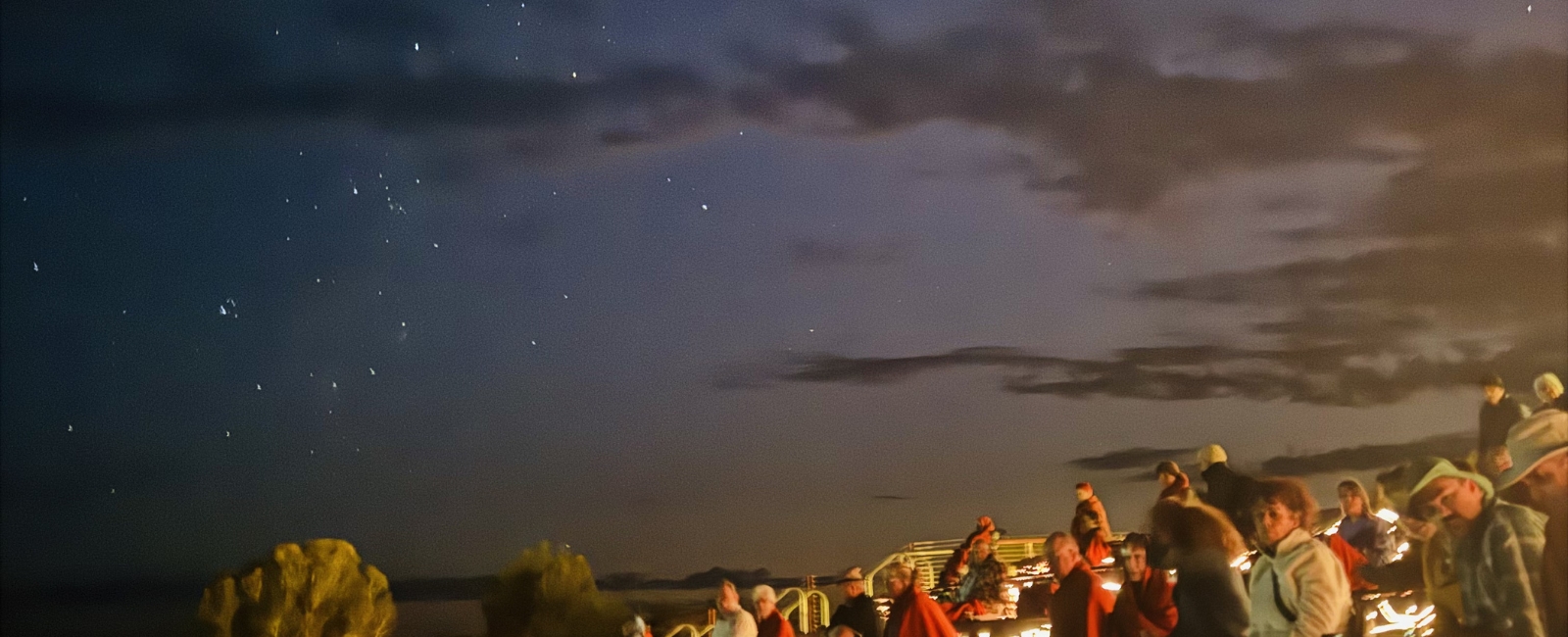
6. Experience the magic of the desert sky by star gazing at Uluru
Go on a fact-finding journey through the southern night sky, enhancing your knowledge of astronomy and its beginnings. Look upon the night sky through telescopes, as knowledgeable guides share ancient Indigenous stories and how they are connected to the night sky.
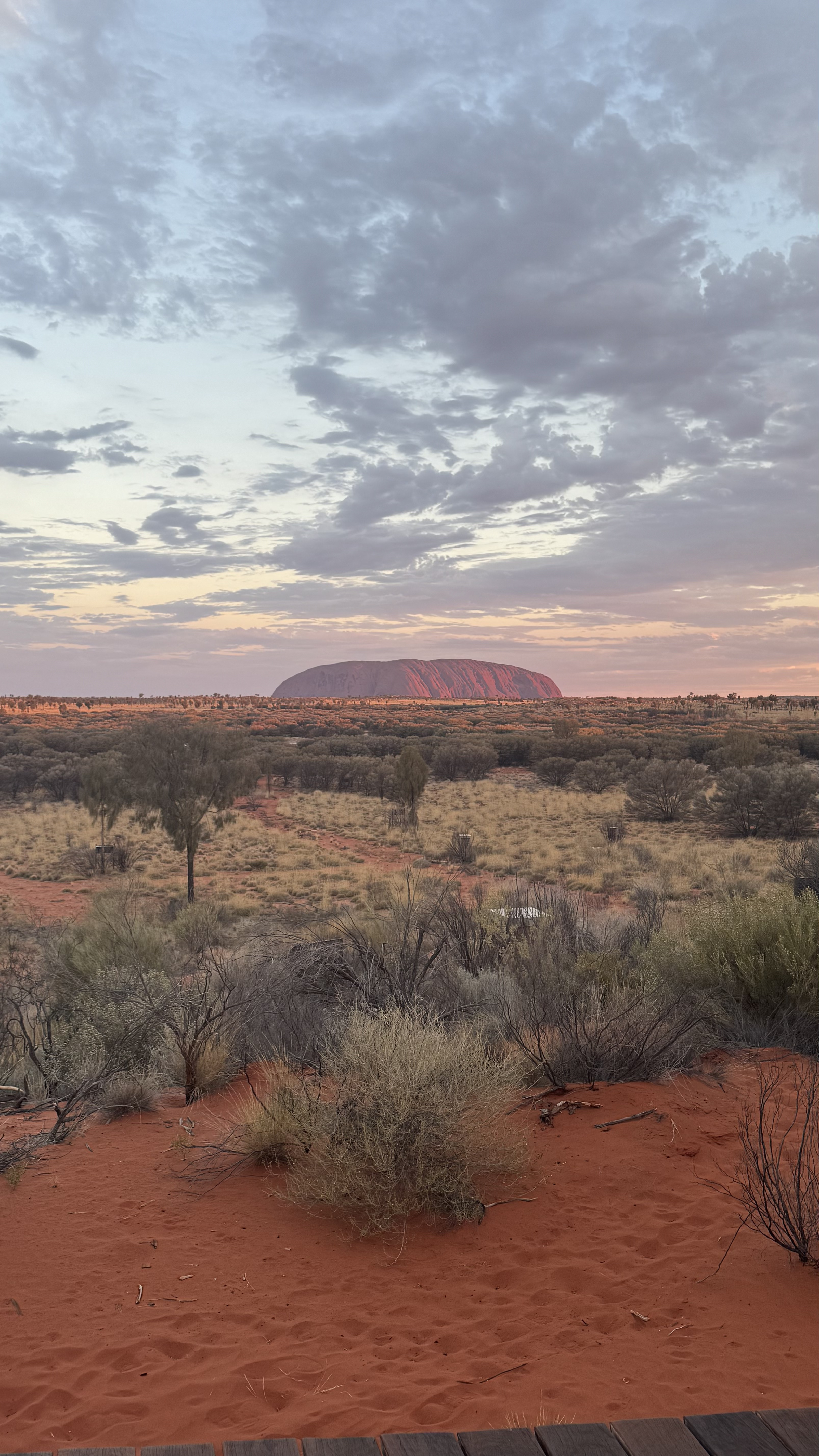
7. Witness culture come to life at Wintijri Wiru
Wintijri Wiru, meaning beautiful view out to the horizon, is a breathtaking cultural storytelling experience that brings to life a chapter of the ancestral Mala story through choreographed drones, lasers and projections that illuminate the night sky. I was in two minds on doing this but after three nights at the Ayers Rock Resort and three nights out camping, I figured what’s one last dinner? And this honestly took my breath away. If you believe in the spiritual and emotional healing powers of Uluru and the land around it, which I do, I had spent the last six days being present, feeling cathartic and renewed and immersing myself in the ancient cultural traditions and stories. But I was waiting for my aha moment.
And I got it. By this night, my final night in this magical land, I had seen Uluru from afar, from below, from above, at sunrise at sunset and from nearly every angle you could imagine. But this night the clouds rolled in, and the sun started setting over the rock; I felt something inside me release. Watching this beautiful story shown on the screen of this stunning landscape, Aussie cocktail and bush tucker in hand, I was brought to tears.
That's it, my seven must-do activities for when you are in Uluru. Thank you for sharing in this journey with me.
Flight time
Flight time is approximately four hours.
Accommodation
Research and book accommodation with Booking.com

